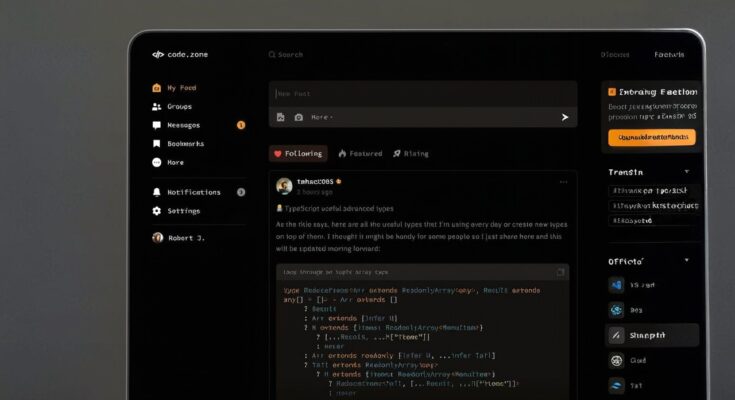Python, a language originally designed in the late 1980s, has evolved into one of the most widely used programming languages today. From its humble beginnings as a simple, easy-to-read scripting language, Python has become a dominant force in many areas of development, including web development, data science, machine learning, and automation. Many companies rely on Python for their backend development, and experienced Python developers continue to push the boundaries of what’s possible with the language.
Why Python Became So Popular
Simplicity and Readability
One of Python’s most beloved features is its simplicity. The language’s syntax is clean, concise, and easy to understand, making it a great choice for both beginners and experienced developers. Python’s design philosophy emphasizes readability, reducing the cognitive load of understanding code.
For example, Python’s use of indentation rather than braces to define code blocks makes it easy to follow the structure of the program, making the code less prone to errors.
Extensive Standard Library and Third-Party Modules
Python comes with an extensive standard library that includes everything from file I/O to network communication. Combined with the vast array of third-party libraries and frameworks, Python allows developers to avoid reinventing the wheel and instead focus on solving problems.
For instance, libraries like NumPy and pandas make Python a top choice for data manipulation and analysis, while Django and Flask are popular frameworks for building scalable web applications.
Cross-Platform Compatibility
Python is inherently cross-platform, meaning that Python applications can run on different operating systems without modification. This flexibility has made Python a go-to solution for many developers building applications that need to run on Windows, macOS, and Linux.
Popular applications like Dropbox and YouTube have used Python to ensure compatibility across different platforms and devices.
Python’s Role in Web Development
Python and the Rise of Web Frameworks
Python’s popularity in web development can be largely attributed to the rise of powerful frameworks such as Django and Flask. These frameworks have made web development faster, easier, and more efficient.
Django, known for its “batteries-included” approach, comes with everything developers need to build robust web applications, from authentication to database management. Flask, on the other hand, is lightweight and flexible, allowing developers to choose their tools as needed. Both frameworks are widely used by startups and large enterprises alike.
Backend Development with Python
Python’s use in backend development is unparalleled due to its clean syntax, speed of development, and scalability. Many companies, from startups to tech giants, leverage Python for their server-side logic.
For instance, Instagram, which processes billions of user requests every day, relies heavily on Python and Django for its backend systems.
Python in Data Science and Machine Learning
Python as the Language of Data Science
Python’s growth in the data science and machine learning domains is a testament to its versatility. Libraries like pandas, Matplotlib, and seaborn have made it the go-to language for data analysis and visualization.
By providing easy-to-use data structures and tools for data cleaning and transformation, Python has empowered data scientists to gain insights from raw data faster and more efficiently.
Machine Learning Frameworks and Libraries
Python has become the standard for machine learning with frameworks such as TensorFlow, Keras, and PyTorch. These libraries simplify the process of training and deploying machine learning models, making it easier for developers and researchers to build AI-powered applications.
For example, TensorFlow is widely used for developing deep learning models that power applications in computer vision, speech recognition, and natural language processing (NLP).
The Growth of Python in Automation and DevOps
Python for Scripting and Automation
One of Python’s most practical applications is in automation. Developers and system administrators use Python to automate repetitive tasks, streamline workflows, and perform batch processing. Python scripts can automate file management, system maintenance, and even testing processes, saving time and reducing human error.
For instance, many DevOps teams use Python to automate server provisioning and deployment pipelines, ensuring that infrastructure is scalable, consistent, and reliable.
Python in DevOps Tooling
In DevOps, Python is used for building tools that automate the deployment and monitoring of applications. Libraries like Fabric and Ansible allow teams to write scripts that automate infrastructure provisioning and configuration management.
For example, Ansible allows system administrators to define the state of their infrastructure in code, which can then be automatically applied to multiple servers.
Python’s Growing Community and Ecosystem
An Active and Supportive Community
Python’s popularity is fueled in part by its strong community of developers and enthusiasts. The Python Software Foundation (PSF) oversees the development and promotion of the language, ensuring it remains accessible and well-documented.
The community is highly active, contributing to open-source projects, sharing knowledge, and organizing events like PyCon. This has made Python an approachable language for developers at all levels.
Extensive Ecosystem and Tools
The Python ecosystem continues to grow, with tools and resources for virtually every area of development. From web development frameworks like Django to data science libraries like scikit-learn, the Python ecosystem has something for everyone.
The flexibility and adaptability of Python make it a powerful tool for a wide variety of use cases, whether you’re building a simple web app or a cutting-edge machine learning model.
The Future of Python
Continued Growth in AI and Machine Learning
As AI and machine learning continue to shape the future of technology, Python will remain at the forefront. Its simplicity, power, and large library ecosystem make it the perfect choice for developing AI-powered applications.
Expanding Use in WebAssembly
WebAssembly (Wasm) is opening up new opportunities for Python to run in the browser. Projects like Pyodide and Brython allow Python code to execute in web browsers, making it easier to build cross-platform applications without relying on JavaScript.
As WebAssembly matures, Python’s role in web development is expected to grow even further.
Conclusion
From backend development and data science to automation and machine learning, Python has cemented its place as one of the most versatile and widely used programming languages in modern development. As Python continues to evolve, its community-driven ecosystem and powerful libraries will ensure it remains a top choice for developers tackling today’s complex challenges.
By embracing Python, companies can build scalable, efficient, and cutting-edge solutions that meet the demands of the modern tech landscape. With its continued growth and development, Python will undoubtedly be at the heart of innovation in web development and beyond. For those looking to dive deeper into web development, there’s no better time than now to explore how Python can power your next big project.



